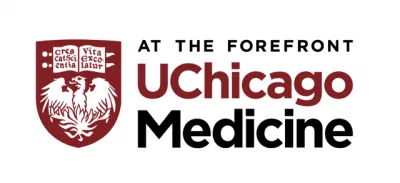
Unlocking the Secrets of SARS-CoV-2: A Tiny Protein's Role in Viral Spread
2025-07-25
Author: Siti
A Game-Changer in Viral Research
In a groundbreaking study published in Nature Communications, University of Chicago researchers have unveiled how SARS-CoV-2, the virus responsible for the COVID-19 pandemic, employs a small yet powerful protein named ORF3a to enhance its infectious capabilities. This revelation could change our approach to combating the virus.
The Who, What, and Why of ORF3a
SARS-CoV-2 has wreaked havoc globally, infecting over 700 million people and causing more than 7 million deaths. While it shares genetic similarities with the earlier SARS-CoV-1 virus, SARS-CoV-2 is far more contagious. Researchers have long pondered what gives it this edge. Dr. Jueqi Chen, an Assistant Professor of Microbiology and the study's lead author, explains that ORF3a was retained during the evolution to SARS-CoV-2 but lost in its predecessor, SARS-CoV-1.
Spike Proteins and Viral Assembly
Traditionally, the focus has been on spike proteins, which these viruses use to invade host cells. However, the new research highlights the crucial role that ORF3a plays not just in viral exit from cells but also in the assembly and processing of these spike proteins. If the spike proteins are not correctly processed, their ability to infect diminishes significantly.
Introducing the 3DB: A Viral Assembly Hub
The researchers discovered that SARS-CoV-2 forms dynamic membrane structures called 3a dense bodies (3DBs). These tiny, bubble-like structures are essential for the virus's assembly, acting as hubs that organize viral components. According to Chen, eliminating these 3DBs reduces the virus's infection efficiency by over 90%.
What Sets SARS-CoV-2 Apart?
One of the most intriguing aspects of this discovery is that SARS-CoV-1 does not form 3DBs, making them a unique feature of SARS-CoV-2. This finding not only highlights the virus's adaptability but also raises questions about how it evolved to dominate as a human pathogen.
Implications for Future Research and Therapies
This study provides valuable insights into how SARS-CoV-2 remodels host structures to facilitate viral assembly. The implications are significant: targeting ORF3a or blocking 3DB formation could pave the way for new antiviral therapies. Additionally, as new variants emerge, researchers must be vigilant for mutations that could enhance 3DB formation or reveal similar mechanisms in other viruses.
A New Frontier in Understanding Viral Infections
The study, titled "SARS-CoV-2 ORF3a drives dynamic dense body formation for optimal viral infectivity," underscores a hidden complexity in SARS-CoV-2's operation, offering a fresh perspective for future therapeutic strategies. With insights like these, we inch closer to unraveling the mysteries of viral success.




 Brasil (PT)
Brasil (PT)
 Canada (EN)
Canada (EN)
 Chile (ES)
Chile (ES)
 Česko (CS)
Česko (CS)
 대한민국 (KO)
대한민국 (KO)
 España (ES)
España (ES)
 France (FR)
France (FR)
 Hong Kong (EN)
Hong Kong (EN)
 Italia (IT)
Italia (IT)
 日本 (JA)
日本 (JA)
 Magyarország (HU)
Magyarország (HU)
 Norge (NO)
Norge (NO)
 Polska (PL)
Polska (PL)
 Schweiz (DE)
Schweiz (DE)
 Singapore (EN)
Singapore (EN)
 Sverige (SV)
Sverige (SV)
 Suomi (FI)
Suomi (FI)
 Türkiye (TR)
Türkiye (TR)
 الإمارات العربية المتحدة (AR)
الإمارات العربية المتحدة (AR)